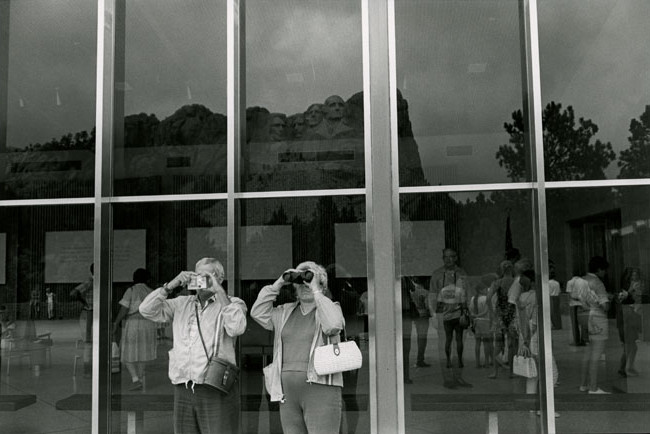In the 1960s, Friedlander began his exploration of America’s “social landscape,” the stuff of lived experience. Rather than striving to convey omniscient detachment by avoiding “obstacles” that would betray his presence as the photographer, he embraced them. For example, Friedlander took many photos of storefront windows and allowed their reflections to play just as large a role in their composition as the objects within them. There are echoes of this technique in this selection from his 1976 book American Monument. Friedlander did not photograph any of his less famous subjects via reflection, but the American viewer has doubtlessly seen enough photos directly facing Mount Rushmore to know what it looks like. Instead of trying to fit its majesty into the frame, Friedlander turned his camera to the windows of the visitor center, capturing Rushmore-as-touristic-experience. Here Friedlander’s presence in his photographs extends beyond visual elements to his personality. The reduction in scale of Mount Rushmore to less than one half a pane of glass exemplifies his characteristic irreverence, while the tourist couple with binoculars considerably dwarf the monument. This betrays a cynicism about the experience of visiting places one has already viewed through countless depictions and heard so much about. Disappointment seems inevitable. Are binoculars required when viewing the mountain in person? Or, do the photos detract from the overall grandeur of the experience by placing too much emphasis on the purely visual, while also spoiling it by creating impossible expectations? Is there any outlet for these feelings other than taking one’s own photographs of Mount Rushmore? The man staring outside, camera around his neck, appears similarly conflicted.
-Ethan Spielman
‹ Return to Exhibition | Learn More About Norman Lee Friedlander ›
